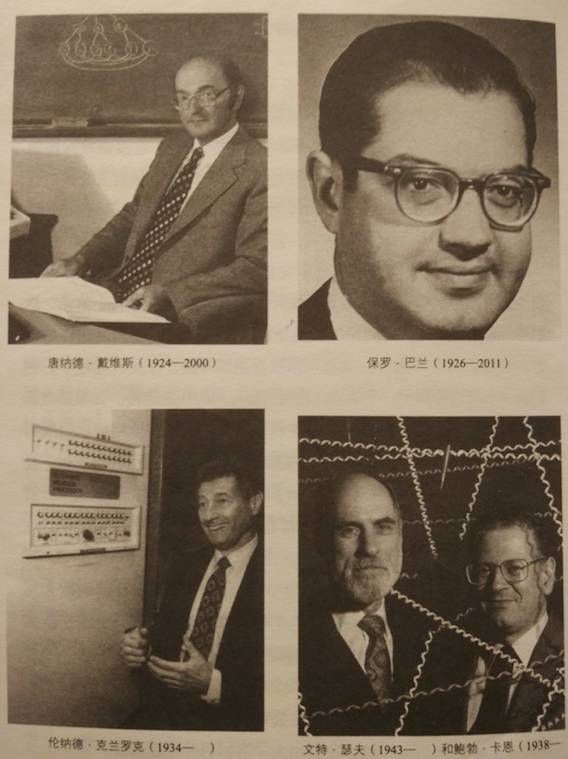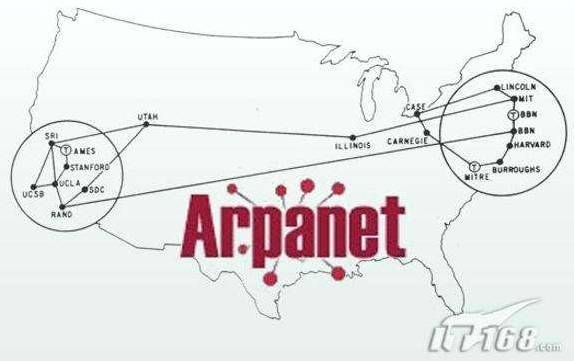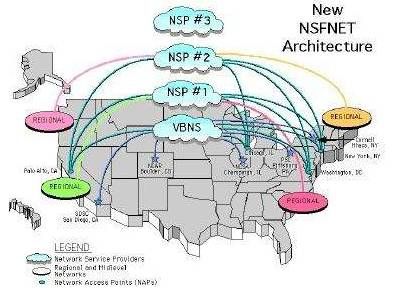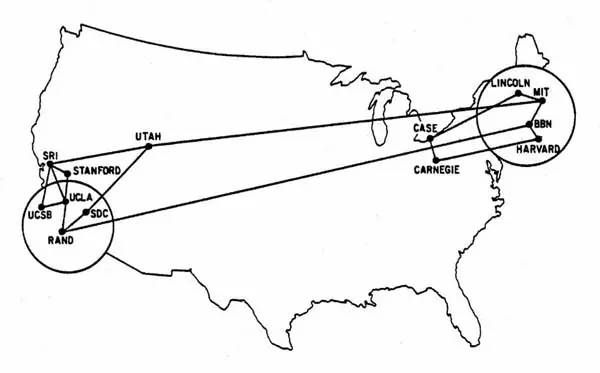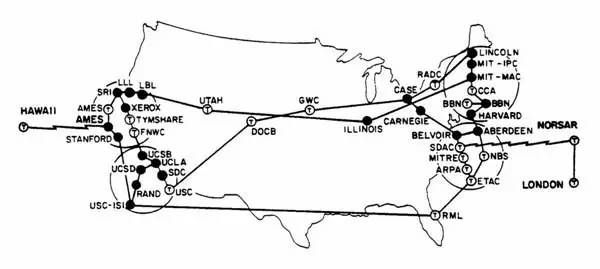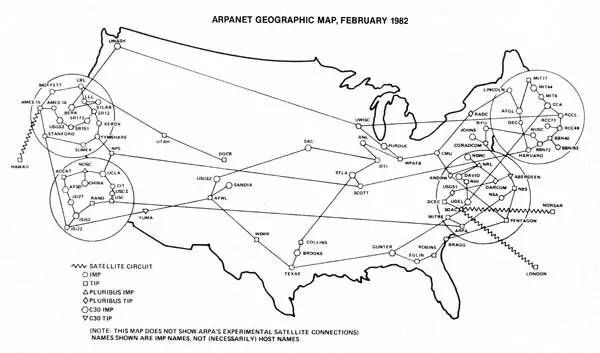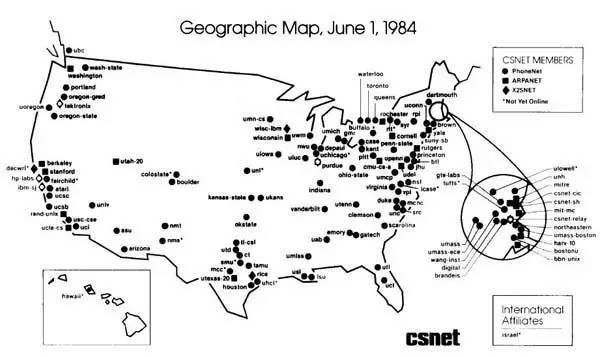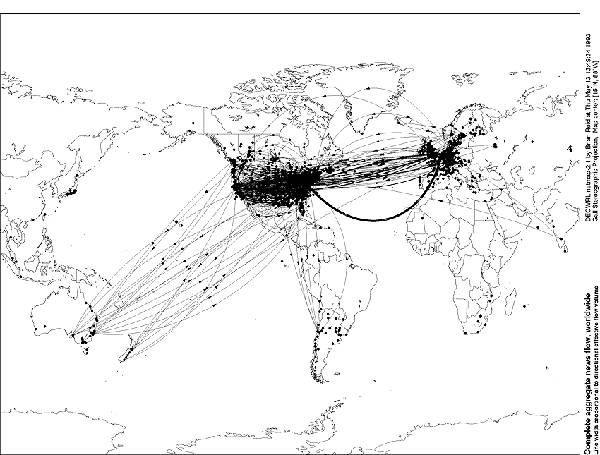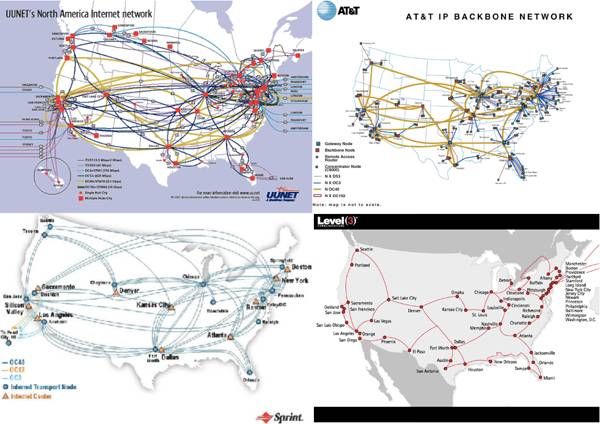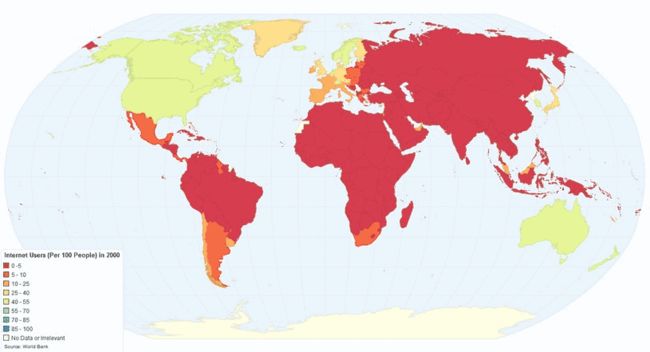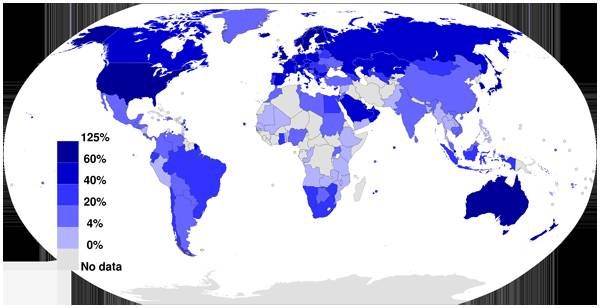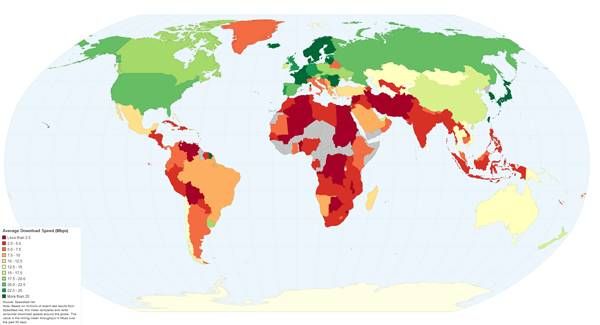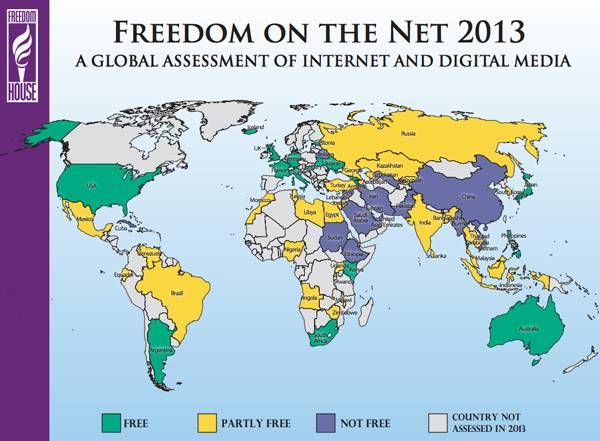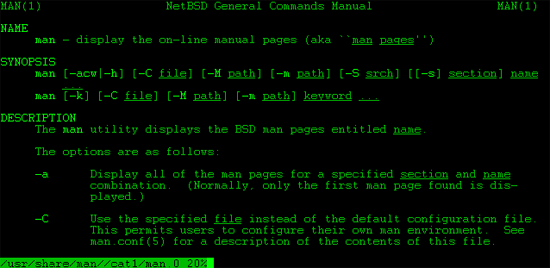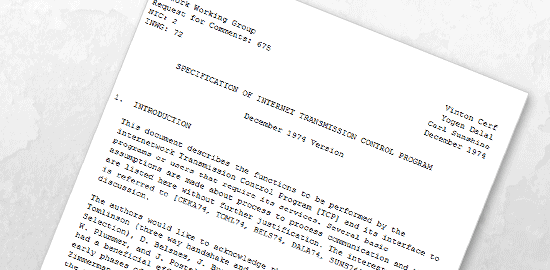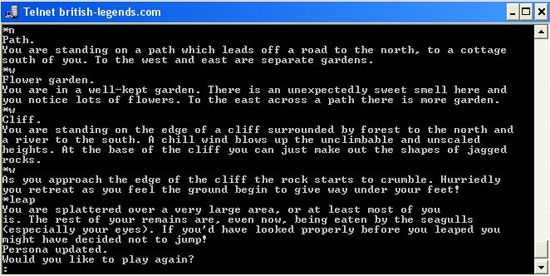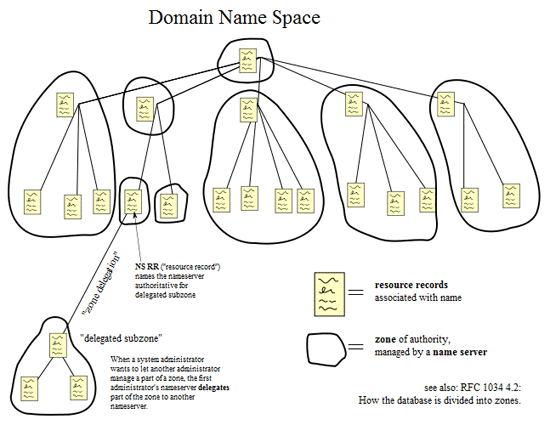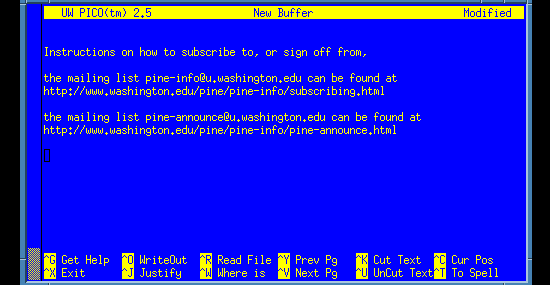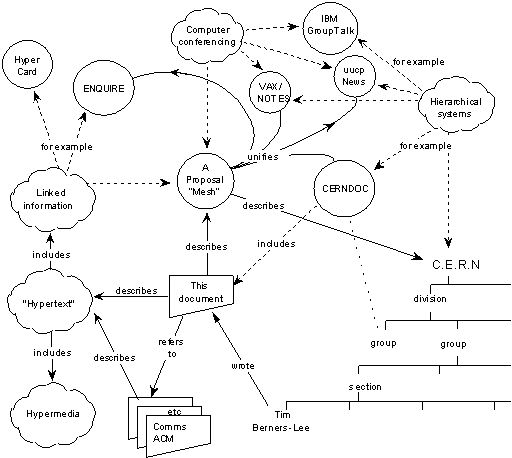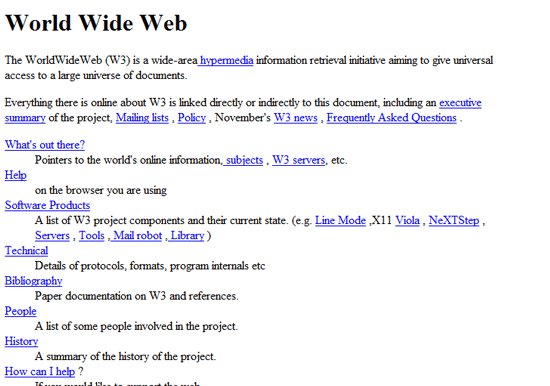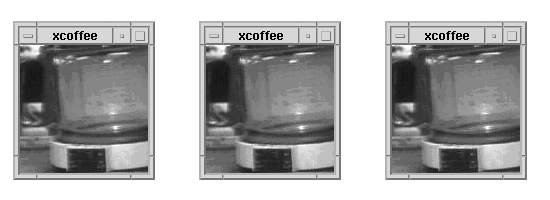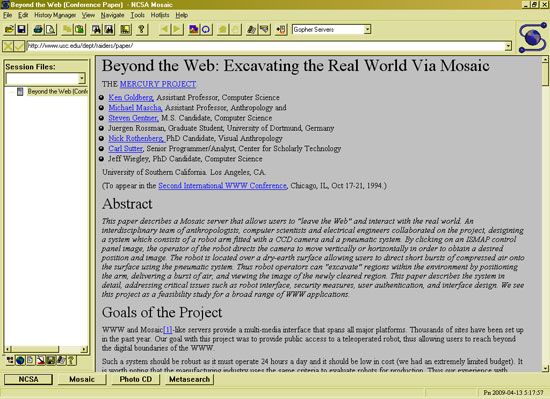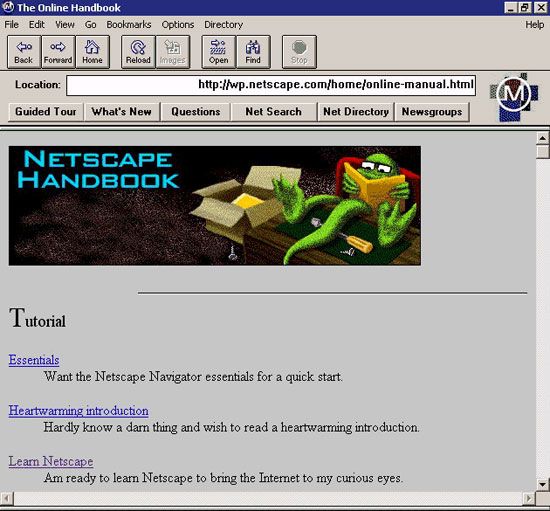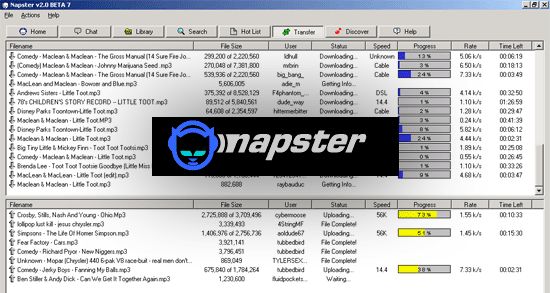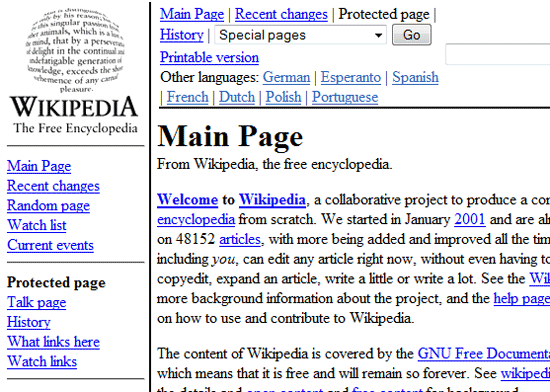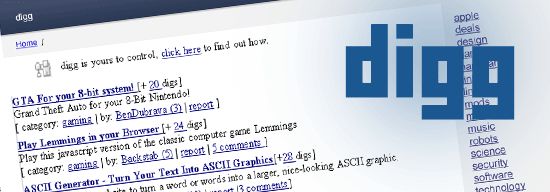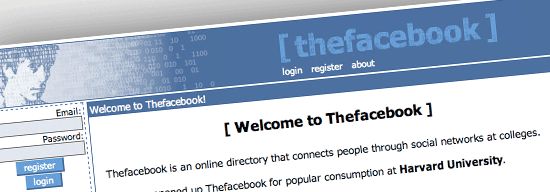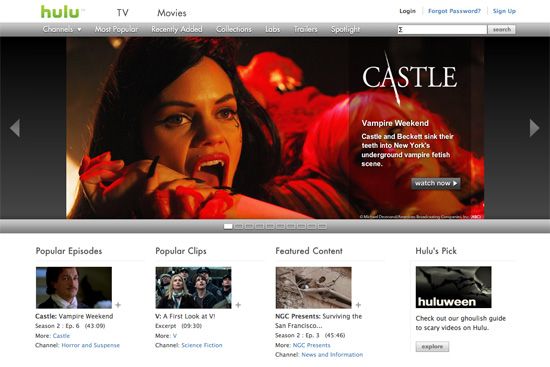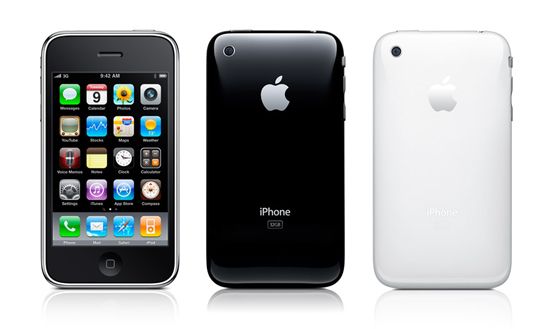一、前言
今天开始学习互联网。
学习的维度是互联网和商业的关系。
润总把这系列内容总结为:互联网世界五大基本规律。
谈论当今的商业世界,互联网几乎是避之不开的问题。
经过多年的飞速发展,互联网已然成为这个世界的基础设施。
当前、未来,一定要基于互联网进行商业思考。
我认为,在此之前,很有必要补一下互联网的历史,于是有了这篇互联网的前世今生。
参考资料:
1、https://www.theguardian.com/technology/2016/jul/15/how-the-internet-was-invented-1976-arpa-kahn-cerf?CMP=share_btn_link
2、https://www.webpagefx.com/blog/web-design/the-history-of-the-internet-in-a-nutshell/
二、互联网的前世今生
“科技发展的过程就像建造大教堂一样。在几百年的历程中,不断有新人加入,每个人都会在现在的基础上添加一块砖,每个人都会说:“我建了一座大教堂。”到了下个月,又会有新砖加在之前的砖瓦上。然后来了一位历史学家,问:“大教堂是谁建的?”彼得在这里加了几块石头,保罗又多加了几块石头。如果不谦虚谨慎的话,你就会自欺欺人地认为自己完成的是最重要的部分。但事实是,每一项贡献都必须以前人的积累为基础。事物与事物之间都是环环相扣的。”
——最先提出“分组交换数据网络”概念的兰德智库工程师保罗·巴兰
1、互联网的前世今生
- 当今的互联网始于1969年阿帕网(Advanced Research Projects Agency Network,ARPANET)。这个基于“包交换理论”而创立的去中心化的分布式计算网络,是由美国国防部高级研究计划署(Advanced Research Projects Agency,ARPA)旗下信息处理技术局(Information Processing Techniques Office,IPTO)1969年底资助开发的世界上第一个计算机远距离封包交换的网络。设置西海岸的四个节点:UCLA、斯坦福研究院、加州大学圣巴巴拉分校、犹他大学联网构成。
- 在那个遥远的时代,这个粗糙的网络奠定了现代互联网的基本架构:TELNET、FTP、网络控制协议NCP以及电子邮件、网络符号@等就此诞生。
- 比起当年阿波罗计划的轰动效应,阿帕网的伟大意义被漠视和低估。
Vox网站2014年用一组可视化图片展示互联网的诞生和变迁。
1969年,美国国防部的高级研究计划局(ARPA)建设了一个军用网,即“阿帕网”(ARPANET)。这就是互联网的前身。
截止1970年末,阿帕网已发展到13个节点,包括东海岸的学校,如哈佛和麻省理工。
1973年,阿帕网已扩张为40个节点,并开始国际化发展,美国的节点能能通过卫星通信与相距较远的夏威夷州、英国的伦敦和北欧的挪威连接。
随着阿帕网进入第二个十年,它仍主要局限在美国,到1982年,该网络只有大约100个节点,但这不足以支撑一个充满活力的在线社区。
这张地图显示了阿帕网和CSNET的节点(标记为“Phonenet”)。CSNET是由美国国家科学基金会资助所建立的用以提供全国范围内链接的计算机科学网。
20世纪80年代,美国国家科学网络资助美国各地建立了数个超级计算中心,并在1986年创建了一个直接连接这些中心的主干网络,即NSFNET。此图显示了1992年的NSFNET,当时,有6000个网络连接到NSFNET,其中三分之一位于海外。
1993年,互联网虽然仍由美国主导,但开始成为一个真正的全球性网络。该图显示了一个完全交互式的超级电子论坛——新闻组(Usenet)上的信息流。
1994年,克林顿政府推进了互联网主干网的私有化。政府资助的NSFNET退役,商业公司开始介入。上面四张图说明了世纪之交的市场演变。当时出现的四家最大的私人长途网络供应商为UUNET、AT&T、Sprint和Level 3。
这张地图显示了从2000年到2012年全球网络用户的发展情况。互联网先在富裕国家兴起,然后进入到中等收入国家,最后渗透到贫穷国家。如今,全球互联网用户超过25亿,而每年还在产生数以亿计的新用户。
人们有两种登录网络的基本方法:一是通过有线宽带,二是通过无线宽带。由图可见,有线网络在世界各地仍然备受欢迎。
此图显示了全球各地的移动宽带普及率(该图与上张图中同颜色的数据不能直接比较)。在发达国家,人们早期通过固定宽带接入网络,之后才拥有移动互联网设备。但一些发展中国家正跳过固定宽带网络的建设阶段,而这样的方式经济有效,因为一个手机塔可以为数以百计的用户提供服务。
这张图揭示了全球各地宽带速度,其中最快的地方是以香港为首的深绿区域,平均速度为每秒近8千万比特。
这张地图显示了各国所面对的断网风险程度。一些国家因与外界的链接不足而容易断网。而另一些国家,如美国,有几十条途径连接到外部世界,使其几乎无法采取断网的审查手段。
这张地图根据互联网自由状况,对全球各地进行了分类。所分类型包括自由、一定程度的自由和不自由。有一些国家和地区未被评估。
三、互联网的历史
While the complete history of the Internet could easily fill a few books, this article should familiarize you with key milestones and events related to the growth and evolution of the Internet between 1969 to 2009.
1969: Arpanet
Arpanet was the first real network to run on packet switching technology (new at the time). On the October 29, 1969, computers at Stanford and UCLA connected for the first time. In effect, they were the first hosts on what would one day become the Internet.
The first message sent across the network was supposed to be “Login”, but reportedly, the link between the two colleges crashed on the letter “g”.
1969: Unix
Another major milestone during the 60’s was the inception of Unix: the operating system whose design heavily influenced that of Linux and FreeBSD (the operating systems most popular in today’s web servers/web hosting services).
1970: Arpanet network
An Arpanet network was established between Harvard, MIT, and BBN (the company that created the “interface message processor” computers used to connect to the network) in 1970.
1971: Email
Email was first developed in 1971 by Ray Tomlinson, who also made the decision to use the “@” symbol to separate the user name from the computer name (which later on became the domain name).
1971: Project Gutenberg and eBooks
One of the most impressive developments of 1971 was the start of Project Gutenberg. Project Gutenberg, for those unfamiliar with the site, is a global effort to make books and documents in the public domain available electronically–for free–in a variety of eBook and electronic formats.
It began when Michael Hart gained access to a large block of computing time and came to the realization that the future of computers wasn’t in computing itself, but in the storage, retrieval and searching of information that, at the time, was only contained in libraries. He manually typed (no OCR at the time) the “Declaration of Independence” and launched Project Gutenberg to make information contained in books widely available in electronic form. In effect, this was the birth of the eBook.
1972: CYCLADES
France began its own Arpanet-like project in 1972, called CYCLADES. While Cyclades was eventually shut down, it did pioneer a key idea: the host computer should be responsible for data transmission rather than the network itself.
1973: The first trans-Atlantic connection and the popularity of emailing
Arpanet made its first trans-Atlantic connection in 1973, with the University College of London. During the same year, email accounted for 75% of all Arpanet network activity.
1974: The beginning of TCP/IP
1974 was a breakthrough year. A proposal was published to link Arpa-like networks together into a so-called “inter-network”, which would have no central control and would work around a transmission control protocol (which eventually became TCP/IP).
1975: The email client
With the popularity of emailing, the first modern email program was developed by John Vittal, a programmer at the University of Southern California in 1975. The biggest technological advance this program (called MSG) made was the addition of “Reply” and “Forward” functionality.
1977: The PC modem
1977 was a big year for the development of the Internet as we know it today. It’s the year the first PC modem, developed by Dennis Hayes and Dale Heatherington, was introduced and initially sold to computer hobbyists.
1978: The Bulletin Board System (BBS)
The first bulletin board system (BBS) was developed during a blizzard in Chicago in 1978.
1978: Spam is born
1978 is also the year that brought the first unsolicited commercial email message (later known as spam), sent out to 600 California Arpanet users by Gary Thuerk.
1979: MUD – The earliest form of multiplayer games
The precursor to World of Warcraft and Second Life was developed in 1979, and was called MUD (short for MultiUser Dungeon). MUDs were entirely text-based virtual worlds, combining elements of role-playing games, interactive, fiction, and online chat.
1979: Usenet
1979 also ushered into the scene: Usenet, created by two graduate students. Usenet was an internet-based discussion system, allowing people from around the globe to converse about the same topics by posting public messages categorized by newsgroups.
1980: ENQUIRE software
The European Organization for Nuclear Research (better known as CERN) launched ENQUIRE (written by Tim Berners-Lee), a hypertext program that allowed scientists at the particle physics lab to keep track of people, software, and projects using hypertext (hyperlinks).
1982: The first emoticon
While many people credit Kevin MacKenzie with the invention of the emoticon in 1979, it was Scott Fahlman in 1982 who proposed using** ** after a joke, rather than the original -) proposed by MacKenzie. The modern emoticon was born.
1983: Arpanet computers switch over to TCP/IP
January 1, 1983 was the deadline for Arpanet computers to switch over to the TCP/IP protocols developed by Vinton Cerf. A few hundred computers were affected by the switch. The name server was also developed in ’83.
1984: Domain Name System (DNS)
The domain name system was created in 1984 along with the first Domain Name Servers (DNS). The domain name system was important in that it made addresses on the Internet more human-friendly compared to its numerical IP address counterparts. DNS servers allowed Internet users to type in an easy-to-remember domain name and then converted it to the IP address automatically.
1985: Virtual communities
1985 brought the development of The WELL (short for Whole Earth ‘Lectronic Link), one of the oldest virtual communities still in operation. It was developed by Stewart Brand and Larry Brilliant in February of ’85. It started out as a community of the readers and writers of the Whole Earth Review and was an open but “remarkably literate and uninhibited intellectual gathering”. Wired Magazine once called The Well “ The most influential online community in the world.”
1986: Protocol wars
The so-called Protocol wars began in 1986. European countries at that time were pursuing the Open Systems Interconnection (OSI), while the United States was using the Internet/Arpanet protocol, which eventually won out.
1987: The Internet grows
By 1987, there were nearly 30,000 hosts on the Internet. The original Arpanet protocol had been limited to 1,000 hosts, but the adoption of the TCP/IP standard made larger numbers of hosts possible.
1988: IRC – Internet Relay Chat
Also in 1988, Internet Relay Chat (IRC) was first deployed, paving the way for real-time chat and the instant messaging programs we use today.
1988: First major malicious internet-based attack
One of the first major Internet worms was released in 1988. Referred to as “The Morris Worm”, it was written by Robert Tappan Morris and caused major interruptions across large parts of the Internet.
1989: AOL is launched
When Apple pulled out of the AppleLink program in 1989, the project was renamed and America Online was born. AOL, still in existence today, later on made the Internet popular amongst the average internet users.
1989: The proposal for the World Wide Web
1989 also brought about the proposal for the World Wide Web, written by Tim Berners-Lee. It was originally published in the March issue of MacWorld, and then redistributed in May 1990. It was written to persuade CERN that a global hypertext system was in CERN’s best interest. It was originally called “Mesh”; the term “World Wide Web” was coined while Berners-Lee was writing the code in 1990.
1990: First commercial dial-up ISP
1990 also brought about the first commercial dial-up Internet provider, The World. The same year, Arpanet ceased to exist.
1990: World Wide Web protocols finished
The code for the World Wide Web was written by Tim Berners-Lee, based on his proposal from the year before, along with the standards for HTML, HTTP, and URLs.
1991: First web page created
1991 brought some major innovations to the world of the Internet. The first web page was created and, much like the first email explained what email was, its purpose was to explain what the World Wide Web was.
1991: First content-based search protocol
Also in the same year, the first search protocol that examined file contents instead of just file names was launched, called Gopher.
1991: MP3 becomes a standard
Also, the MP3 file format was accepted as a standard in 1991. MP3 files, being highly compressed, later become a popular file format to share songs and entire albums via the internet.
1991: The first webcam
One of the more interesting developments of this era, though, was the first webcam. It was deployed at a Cambridge University computer lab, and its sole purpose was to monitor a particular coffee maker so that lab users could avoid wasted trips to an empty coffee pot.
1993: Mosaic – first graphical web browser for the general public
The first widely downloaded Internet browser, Mosaic, was released in 1993. While Mosaic wasn’t the first web browser, it is considered the first browser to make the Internet easily accessible to non-techies.
1993: Governments join in on the fun
In 1993, both the White House and the United Nations came online, marking the beginning of the .gov and .org domain names.
1994: Netscape Navigator
Mosaic’s first big competitor, Netscape Navigator, was released the year following (1994).
1995: Commercialization of the internet
1995 is often considered the first year the web became commercialized. While there were commercial enterprises online prior to ’95, there were a few key developments that happened that year. First, SSL (Secure Sockets Layer) encryption was developed by Netscape, making it safer to conduct financial transactions (like credit card payments) online.
In addition, two major online businesses got their start the same year. The first sale on “Echo Bay” was made that year. Echo Bay later became eBay. Amazon.com also started in 1995, though it didn’t turn a profit for six years, until 2001.
1995: Geocities, the Vatican goes online, and JavaScript
Other major developments that year included the launch of Geocities (which officially closed down on October 26, 2009).
The Vatican also went online for the first time.
Java and JavaScript (originally called LiveScript by its creator, Brendan Eich, and deployed as part of the Netscape Navigator browser – see comments for explanation) was first introduced to the public in 1995. ActiveX was launched by Microsoft the following year.
1996: First web-based (webmail) service
In 1996, HoTMaiL (the capitalized letters are an homage to HTML), the first webmail service, was launched.
1997: The term “weblog” is coined
While the first blogs had been around for a few years in one form or another, 1997 was the first year the term “weblog” was used.
1998: First new story to be broken online instead of traditional media
In 1998, the first major news story to be broken online was the Bill Clinton/Monica Lewinsky scandal (also referred to as “Monicagate” among other nicknames), which was posted on The Drudge Reportafter Newsweek killed the story.
1998: Google!
Google went live in 1998, revolutionizing the way in which people find information online.
1998: Internet-based file-sharing gets its roots
In 1998 as well, Napster launched, opening up the gates to mainstream file-sharing of audio files over the internet.
1999: SETI@home project
1999 is the year when one of the more interesting projects ever brought online: the SETI@home project, launched. The project has created the equivalent of a giant supercomputer by harnessing the computing power of more than 3 million computers worldwide, using their processors whenever the screensaver comes on, indicating that the computer is idle. The program analyzes radio telescope data to look for signs of extraterrestrial intelligence.
2000: The bubble bursts
2000 was the year of the dotcom collapse, resulting in huge losses for legions of investors. Hundreds of companies closed, some of which had never turned a profit for their investors. The NASDAQ, which listed a large number of tech companies affected by the bubble, peaked at over 5,000, then lost 10% of its value in a single day, and finally hit bottom in October of 2002.
2001: Wikipedia is launched
With the dotcom collapse still going strong, Wikipedia launched in 2001, one of the websites that paved the way for collective web content generation/social media.
2003: VoIP goes mainstream
In 2003: Skype is released to the public, giving a user-friendly interface to Voice over IP calling.
2003: MySpace becomes the most popular social network
Also in 2003, MySpace opens up its doors. It later grew to be the most popular social network at one time (though it has since been overtaken by Facebook).
2003: CAN-SPAM Act puts a lid on unsolicited emails
Another major advance in 2003 was the signing of the Controlling the Assault of Non-Solicited Pornography and Marketing Act of 2003, better known as the CAN-SPAM Act.
2004: Web 2.0
Though coined in 1999 by Darcy DiNucci, the term “Web 2.0”, referring to websites and Rich Internet Applications (RIA) that are highly interactive and user-driven became popular around 2004. During the first Web 2.0 conference, John Batelle and Tim O’Reilly described the concept of “ the Web as a Platform“: software applications built to take advantage of internet connectivity, moving away from the desktop (which has downsides such as operating system dependency and lack of interoperability).
2004: Social Media and Digg
The term “social media”, believed to be first used by Chris Sharpley, was coined in the same year that “Web 2.0” became a mainstream concept. Social media–sites and web applications that allow its users to create and share content and to connect with one another–started around this period. People loved the idea of being able to travel through their friends and families pictures and adventures, despite not being physically present.
Digg, a social news site, launched on November of 2004, paving the way for sites such as Reddit, Mixx, and Yahoo! Buzz. Digg revolutionized traditional means of generating and finding web content, democratically promoting news and web links that are reviewed and voted on by a community.
2004: “The” Facebook open to college students
Facebook launched in 2004, though at the time it was only open to college students and was called “The Facebook”; later on, “The” was dropped from the name, though the URL http://www.thefacebook.com still works.
2005: YouTube – streaming video for the masses
YouTube launched in 2005, bringing free online video hosting and sharing to the masses.
2006: Twitter gets twittering
Twitter launched in 2006. It was originally going to be called twittr (inspired by Flickr); the first Twitter message was “just setting up my twttr”.
2007: Major move to place TV shows online
Hulu was first launched in 2007, a joint venture between ABC, NBC, and Fox to make popular TV shows available to watch online.
2007: The iPhone and the Mobile Web
The biggest innovation of 2007 was almost certainly the iPhone, which was almost wholly responsible for renewed interest in mobile web applications and design.
2008: “Internet Election”
The first “ Internet election” took place in 2008 with the U.S. Presidential election. It was the first year that national candidates took full advantage of all the Internet had to offer. Hillary Clinton jumped on board early with YouTube campaign videos. Virtually every candidate had a Facebook page or a Twitter feed, or both.
Ron Paul set a new fundraising record by raising $4.3 million in a single day through online donations, and then beat his own record only weeks later by raising $4.4 million in a single day.
The 2008 elections placed the Internet squarely at the forefront of politics and campaigning, a trend that is unlikely to change any time in the near future.
2009: ICANN policy changes
2009 brought about one of the biggest changes to come to the Internet in a long time when the U.S. relaxed its control over ICANN, the official naming body of the Internet (they’re the organization in charge of registering domain names).
The Future?
Where is the future of the Internet headed? We can only assume that the Internet will continue to grow. From basic developments to things like PPC advertising, the Internet has only become more impressive over time. Share your opinions in the comments section.
Sources and Further Reading
A People’s History of the Internet: from Arpanet in 1969 to Today: A timeline of the Internet from guardian.co.uk.
History of the Internet: An early timeline of the Internet, from precursors in the 1800s up through 1997.
A Brief History of the Web: A series of videos from Microsoft to celebrate the launch of Internet Explorer 8.
The History of the Internet – Tim Berners-Lee: A brief history of major developments associated with the Internet from About.com.
Hobbes’ Internet Timeline – the definitive ARPAnet & Internet History: A very thorough timeline of the Internet, starting in 1957 and going up through 2004, with tons of statistics and source material included.
Internet Timeline: A basic timeline of Internet history from FactMonster.com.

